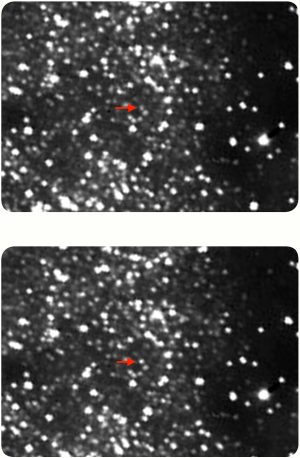
Ultima Thule is starting to stand out above background stars as New Horizons gets closer. Full image credit: NASA/Johns Hopkins Applied Physics Laboratory/Southwest Research Institute/Brian May (credit: NASA)
Indications that New Horizons survived the flyby—rather than running in to a small moon or ring—will have to wait for the roughly six hours it takes light to travel from the location of 2014 MU69, the target of its attentions. Nicknamed Ultima Thule, the object is a small ball of ice in the distant Kuiper Belt, which is a large collection of small bodies that froze out of a disk of gas and dust early in the Solar System's history.
The full extent of our knowledge of Ultima Thule's surface is that it's about 30 kilometers across and not perfectly spherical, based on its occultation of a background star. It only reflects about 10 percent of the sunlight that reaches it, but imparts a reddish tint to what little light escapes. Beyond that, everything New Horizons sees will be a completely new discovery. NASA was still scanning Ultima for moons and rings in mid-December before committing to a flyby that will take New Horizons three times closer than it came to Pluto.
No comments:
Post a Comment